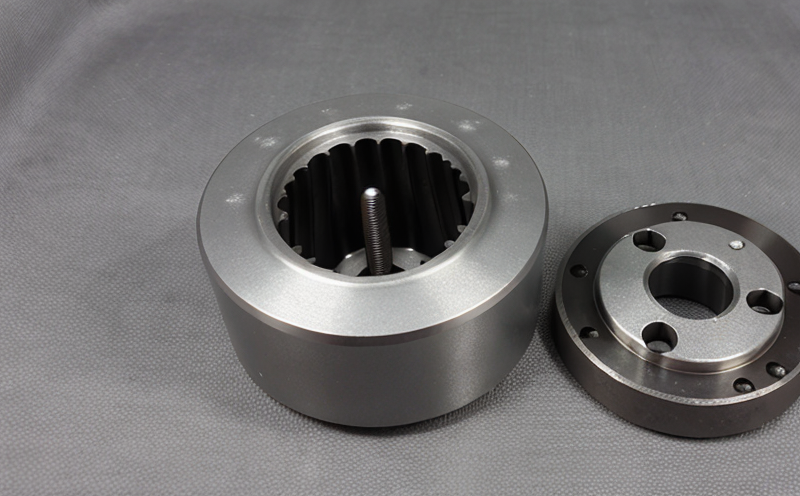ISO/ASTM 52921 Standard Terminology for AM Testing
The ISO/ASTM 52921 standard is a comprehensive terminology framework designed to provide clarity and consistency in the language used when discussing Additive Manufacturing (AM) testing. This standard ensures that all parties involved in AM processes—whether they are researchers, manufacturers, regulators, or end-users—are speaking the same language.
The development of this terminology has been driven by the need for precise communication within a rapidly evolving field where new materials and processes are continually being introduced. The standard defines key terms related to AM testing, including definitions for various types of tests, parameters used in these tests, and the equipment employed. By standardizing these terms, ISO/ASTM 52921 helps eliminate ambiguities that can arise from differing interpretations.
The scope of this standard includes a wide range of topics pertinent to AM testing such as powder metallurgy, metal additive manufacturing (MAM), and other advanced manufacturing techniques. It covers everything from the initial stages of material preparation through final product inspection. The standard also addresses common challenges faced during AM processes like build orientation effects, residual stresses, and part shrinkage.
One critical aspect addressed by ISO/ASTM 52921 is the concept of "in-process monitoring." This involves continuous observation throughout the manufacturing process to ensure that parts meet specified quality criteria. In-process monitoring can involve real-time temperature control, pressure adjustments, or even inline X-ray imaging during laser sintering operations.
Another important feature is the definition of "post-processing" procedures necessary after AM fabrication has been completed. These might include heat treatment to relieve stresses introduced during construction or cryogenic cooling to enhance mechanical properties.
The standard also emphasizes non-destructive testing (NDT) methods essential for evaluating finished parts without damaging them. Techniques such as ultrasonic inspection, magnetic particle testing, radiographic examination, and eddy current testing are all covered in detail within the document.
ISO/ASTM 52921 aims to bridge gaps between different stakeholders by providing universally accepted definitions. For example, it clarifies what constitutes a "build volume," how one measures "surface roughness" on AM parts, and which factors contribute most significantly to dimensional accuracy.
In addition to its technical merits, the standard plays an important role in fostering international collaboration among various industries involved with AM technologies. By harmonizing terminologies globally, it facilitates smoother communication between countries and companies worldwide.
Scope and Methodology
The scope of ISO/ASTM 52921 includes defining terminology for Additive Manufacturing (AM) processes and their associated tests. The document covers various aspects related to AM testing, such as the names given to different types of tests, parameters used in these tests, and equipment utilized.
- It defines terms like "in-process monitoring," which refers to continuous observation during the manufacturing process,
- Covers post-processing procedures needed after AM fabrication has been completed,
- Includes non-destructive testing (NDT) methods important for evaluating finished parts without damaging them.
The methodology behind developing this terminology involves extensive consultation with experts from various sectors including academia, industry, and government organizations. This collaborative approach ensures that the resulting definitions reflect current best practices and future trends in AM technology.
Benefits
The implementation of ISO/ASTM 52921 offers numerous advantages to those working within the field of Additive Manufacturing. One major benefit is enhanced clarity in communications, which reduces misunderstandings and improves collaboration among team members.
This standard promotes consistency across industries by providing a common language for discussing AM tests. This uniformity contributes significantly towards improving quality control measures and ensuring that products meet expected standards consistently.
By defining precise terms related to AM processes, ISO/ASTM 52921 supports research and development efforts aimed at advancing the capabilities of additive manufacturing technologies. Researchers can build upon existing knowledge more effectively when they have clear definitions available for key concepts.
The standard also helps in educating new entrants into the industry by offering a reliable source of information about AM testing practices. Whether students or professionals, individuals seeking to understand this complex field will find valuable insights here.
Use Cases and Application Examples
In a recent case study, a manufacturer used ISO/ASTM 52921 to standardize internal communication regarding AM processes. This led to improved coordination between departments and reduced errors in production schedules.
A university research team incorporated the terminology from this standard into their curriculum, making it easier for students to grasp complex concepts related to AM testing.
An aerospace company applied ISO/ASTM 52921 during a project involving large-scale metal additive manufacturing. By using consistent terms throughout the project lifecycle, they ensured that all team members were aligned on expectations and outcomes.





